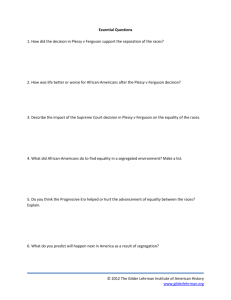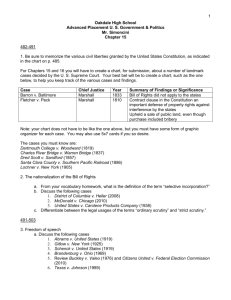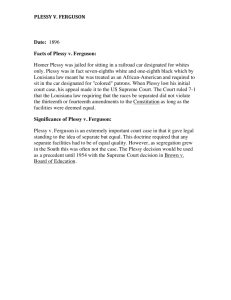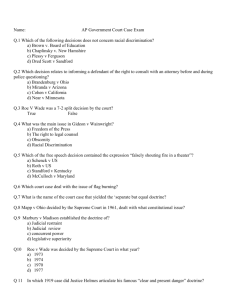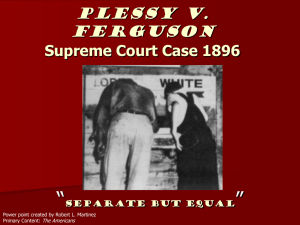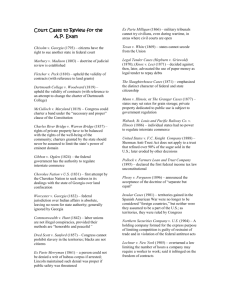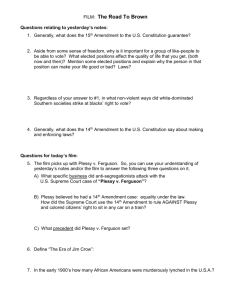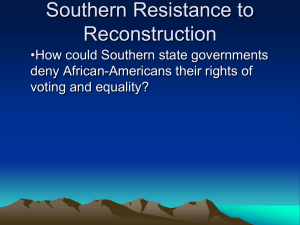Disc cases (C - School-One
advertisement
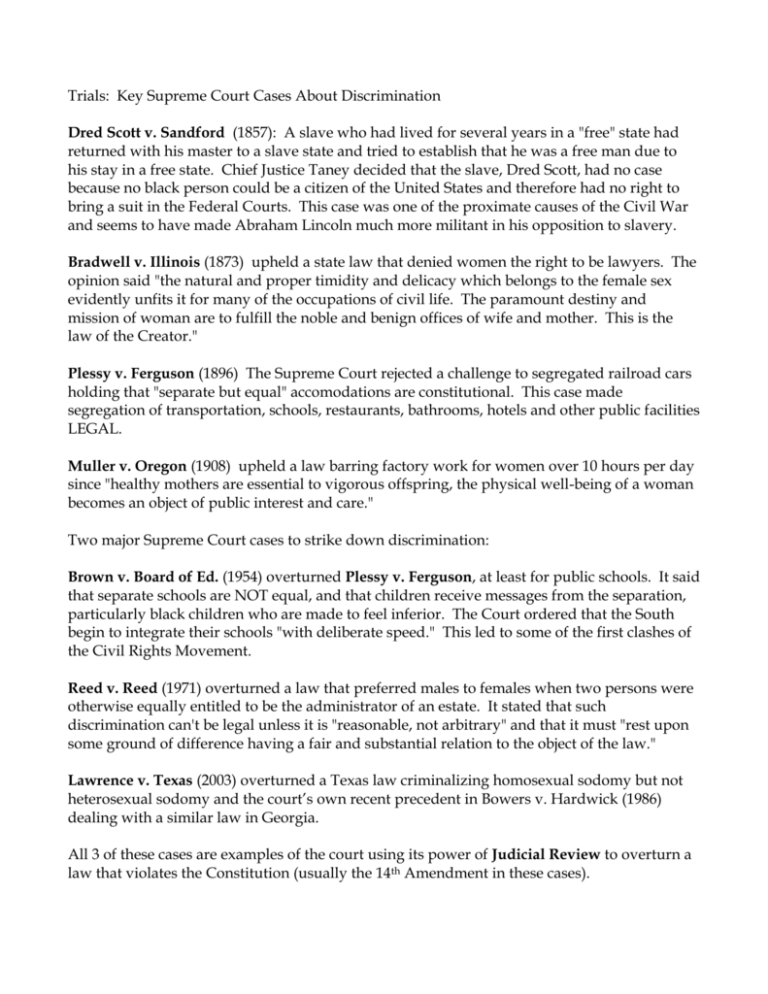
Trials: Key Supreme Court Cases About Discrimination Dred Scott v. Sandford (1857): A slave who had lived for several years in a "free" state had returned with his master to a slave state and tried to establish that he was a free man due to his stay in a free state. Chief Justice Taney decided that the slave, Dred Scott, had no case because no black person could be a citizen of the United States and therefore had no right to bring a suit in the Federal Courts. This case was one of the proximate causes of the Civil War and seems to have made Abraham Lincoln much more militant in his opposition to slavery. Bradwell v. Illinois (1873) upheld a state law that denied women the right to be lawyers. The opinion said "the natural and proper timidity and delicacy which belongs to the female sex evidently unfits it for many of the occupations of civil life. The paramount destiny and mission of woman are to fulfill the noble and benign offices of wife and mother. This is the law of the Creator." Plessy v. Ferguson (1896) The Supreme Court rejected a challenge to segregated railroad cars holding that "separate but equal" accomodations are constitutional. This case made segregation of transportation, schools, restaurants, bathrooms, hotels and other public facilities LEGAL. Muller v. Oregon (1908) upheld a law barring factory work for women over 10 hours per day since "healthy mothers are essential to vigorous offspring, the physical well-being of a woman becomes an object of public interest and care." Two major Supreme Court cases to strike down discrimination: Brown v. Board of Ed. (1954) overturned Plessy v. Ferguson, at least for public schools. It said that separate schools are NOT equal, and that children receive messages from the separation, particularly black children who are made to feel inferior. The Court ordered that the South begin to integrate their schools "with deliberate speed." This led to some of the first clashes of the Civil Rights Movement. Reed v. Reed (1971) overturned a law that preferred males to females when two persons were otherwise equally entitled to be the administrator of an estate. It stated that such discrimination can't be legal unless it is "reasonable, not arbitrary" and that it must "rest upon some ground of difference having a fair and substantial relation to the object of the law." Lawrence v. Texas (2003) overturned a Texas law criminalizing homosexual sodomy but not heterosexual sodomy and the court’s own recent precedent in Bowers v. Hardwick (1986) dealing with a similar law in Georgia. All 3 of these cases are examples of the court using its power of Judicial Review to overturn a law that violates the Constitution (usually the 14th Amendment in these cases).


